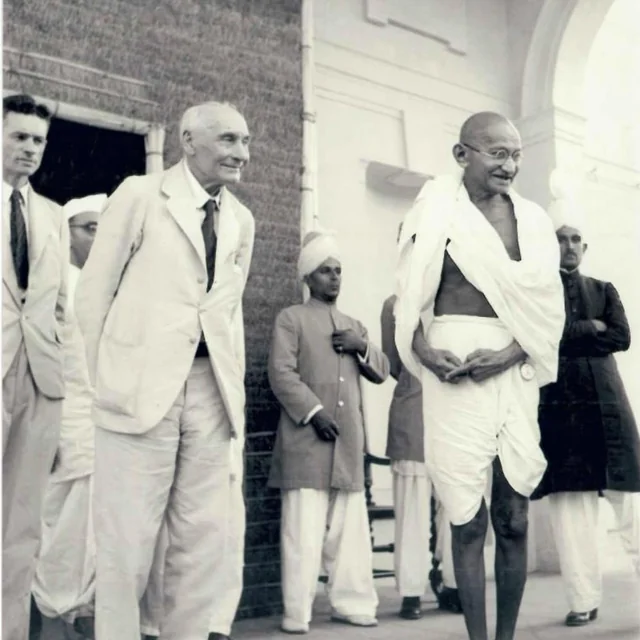Any idea where the smiling picture of Gandhi that we see on currency notes today came from? Read on to the full story to find out.
For decades, Indians have grown accustomed to seeing the warm, smiling face of the ‘Father of the Nation’ on banknotes — a picture so iconic that it often becomes the very first image of Gandhi that comes to mind. But behind this timeless portrait lies a fascinating story that few know.
Contrary to the widespread belief that the picture was a hand-drawn caricature, it was, in fact, born out of a real photograph. The image was not an artistic rendition, but a carefully chosen crop from history.
The original photograph captured Gandhi alongside Lord Frederick William Pethick-Lawrence, a prominent British politician who once championed the women’s suffrage movement in Great Britain before serving as Secretary of State for India and Burma. The year was 1946, the location — the grandeur of the then Viceroy House, now known as Rashtrapati Bhavan. Snapped by an unknown photographer, the candid shot immortalized Gandhi’s gentle smile in a way that would eventually transcend into one of the most recognizable portraits in Indian history.

The mirror image of this photograph later found its way onto the Mahatma Gandhi Series of banknotes, first introduced by the Reserve Bank of India in 1996. These notes were released gradually in various denominations — beginning with the Rs 10 and Rs 100 notes in June 1996, followed by Rs 50 in 1997, Rs 500 in 1997, Rs 1000 in 2000, Rs 5 in 2001, and Rs 20 in 2001.
